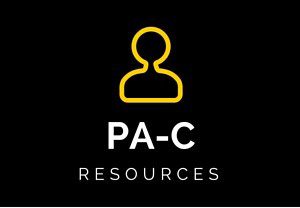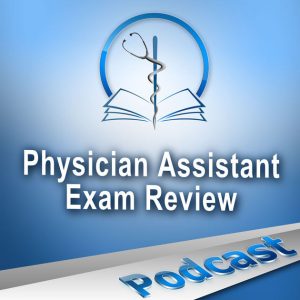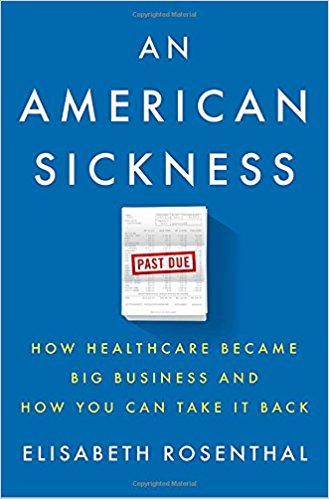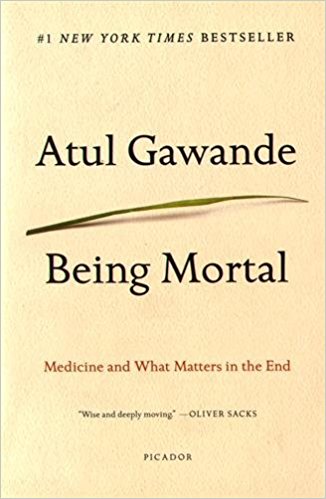Tools and Resources Practicing PAs
As physician assistants, we have the best career in the world. But even though you have made it through the PA school years, there is still work to be done to maintain certification, manage debt, attain CME, prepare a professional resume and cover letter, enter an optional PA residency program and continue your growth beyond the clinical and didactic years of your training.
As a new graduate, the transition from PA student to working PA-C can be stressful and confusing. There are several things you need to accomplish or obtain before you can practice the full scope of your abilities, and this process varies by state and can change over time.
I have created this ever-evolving guide as a go-to resource to help you along the way.
As a newbie PA, you will have to
- Become nationally certified (by the NCCPA via the PANCE)
- Obtain a state license in the state you wish to practice
- Obtain an NPI number
- Obtain a federal DEA number
As an established PA, you will have to
- Maintain national certification (Take the PANRE)
- Complete 100 hours of CME credits every two years
- Pay your state dues
- Renew your DEA license
Most hospitals also have their own privileging process with a variety of requirements in addition to the steps mentioned above. Remember that some of these requirements are step-wise and must be completed in a particular order with processing and wait times in between. Try to start this process as early as possible as not to delay your employment.
National Provider Number (NPI)
Apply for your National Provider Identifier (NPI) number
- What is it? The Administrative Simplification provisions of the Health Insurance Portability and Accountability Act of 1996 (HIPAA) mandated the adoption of a standard unique identifier for health care providers. The National Plan and Provider Enumeration System (NPPES) collects identifying information on health care providers and assigns each a unique National Provider Identifier (NPI)
- You must obtain this number before applying for the Federal DEA number
- The application is free and takes under 24 hrs to receive
Federal DEA Number
You need the following for your DEA Number:
- DEA Form 224: New Application for Retail Pharmacy, Hospital/Clinic, Practitioner, Teaching Institution, or Mid-Level Practitioner.
- Fee: $731 every 3 years (and always rising)
- This must be done AFTER you receive the ability to prescribe in your state.
Physician Assistant State Licensing Boards
- Alabama
- Alaska
- American Samoa
- Arizona
- Arkansas
- California
- Colorado
- Connecticut
- Delaware
- District of Columbia
- Florida
- Georgia
- Guam
- Hawaii
- Idaho
- Illinois
- Indiana
- Iowa
- Kansas
- Kentucky
- Louisiana
- Maine
- Maryland
- Massachusetts
- Michigan
- Minnesota
- Mississippi
- Missouri
- Montana
- Nebraska
- Nevada
- New Hampshire
- New Jersey
- New Mexico
- New York
- North Carolina
- North Dakota
- Ohio
- Oklahoma
- Oregon
- Pennsylvania
- Puerto Rico
- Rhode Island
- South Carolina
- South Dakota
- Tennessee
- Texas
- Utah
- Vermont
- Virgin Islands
- Virginia
- Washington
- West Virginia
- Wisconsin
- Wyoming
Posts to Read
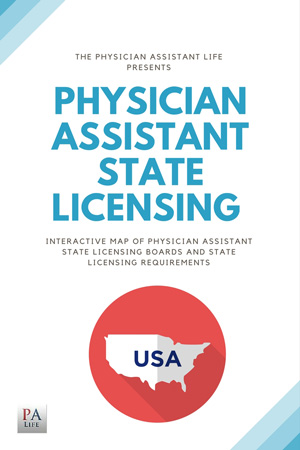
Physician Assistant State Licensing: Everything you Need to Know
As a freshly minted new graduate PA there are four steps you have to complete to move successfully from program to practice: Become nationally certified (by the NCCPA via the PANCE) Obtain a state license in the state you wish to practice Obtain an NPI number Obtain a federal DEA number As a practicing PA, you must […]
Become nationally certified (PANCE) or maintain certification (PANRE)
You can sign up for the Physician Assistant National Certification Exam (PANCE) no earlier than 90 days before your anticipated program completion date. The earliest you may test is 7 days after your program completion” The exam currently costs $475.
To develop test-taking skills, you must actively practice what you will be doing on the test - answering multiple-choice questions.
- The NCCPA offers practice exams for $35
- Interactive practice exams are part of the PANCE and PANRE Exam Academy and SmartyPANCE
Be sure to check the exam blueprints section of the NCCPA website to see a breakdown of the exam content. Download my free interactive Content Blueprint Checklist.
- Download the PANCE and PANRE interactive content blueprint, which links each required disorder to the corresponding SMARTYPANCE lesson
If you do not pass, you can retake the exam no sooner than 90 days later, and no more than 3 times per year
Free PANRE Practice Exam
Have Your Exam Results Emailed to You
Enter your name and email address below to have your results as well as the test questions, your answers and the correct answers delivered to your inbox.
Smarty PANCE Board Review
14 NCCPA™ Content Blueprint Courses
- Cardiology 13% - 51 disorders
- Pulmonary 10% - 31 disorders
- GI and Nutrition 9% -38 disorders
- Musculoskeletal 8% - 36 disorders
- ENT 7% - 61 disorders
- Reproductive 7% - 46 disorders
- Neurology 7% - 34 disorders
- Endocrinology 7% - 17 disorders
- Infectious Disease 6% - 41 disorders
- Psychiatry/Behavioral Science 6% -18 disorders
- Genitourinary 5% - 25 disorders
- Renal 5% - 14 disorders
- Dermatology 5% - 55 disorders
- Hematology 5% - 15 disorders
Total: 14 organ systems and 482 diseases/disorders
Topic Specific Practice Exams
- Cardiology Exam - 147 Questions
- Pulmonology Exam - 143 Questions
- GI and Nutrition Exam - 149 Questions
- Musculoskeletal Exam -126 Questions
- ENT Exam -111 Questions
- Reproductive Exam - 107 Questions
- Genitourinary Exam - 72 Questions
- Neurology Exam - 84 Questions
- Endocrinology Exam - 76 Questions
- Psychiatry Exam - 78 Questions
- Dermatology Exam - 66 Questions
- Hematology Exam - 39 Questions
- Infectious Disease Exam (coming soon)
Comprehensive Practice Exams
- 225 question exam 1
- 225 question exam 2
- 225 question exam 3
- 225 question exam 4
- 225 question exam 5
- Virtual PANCE
- Virtual PANRE
- 60 question Academy exam 1
- 60 question Academy exam 2
- 60 question Academy exam 3
- 60 question Academy exam 4
- The Daily PANCE and PANRE Exam 1
- The Daily PANCE and PANRE Exam 2
- The Daily PANCE and PANRE Exam 3
- The Daily PANCE and PANRE Exam 4
- The Daily PANCE and PANRE Final Exam
Easy Listening
Why not accomplish more during your long commutes? These two podcasts can make the hours seem like minutes and ease the pain of studying for your PANRE.
The Audio PANCE and PANRE Physician Assistant Board Review Podcast
Subscribe on iTunes Google Play
Physician Assistant Exam Review Podcast by Brian Wallace
Looking for the even-numbered episodes? These can be downloaded on the Academy Members Homepage
Posts to read:
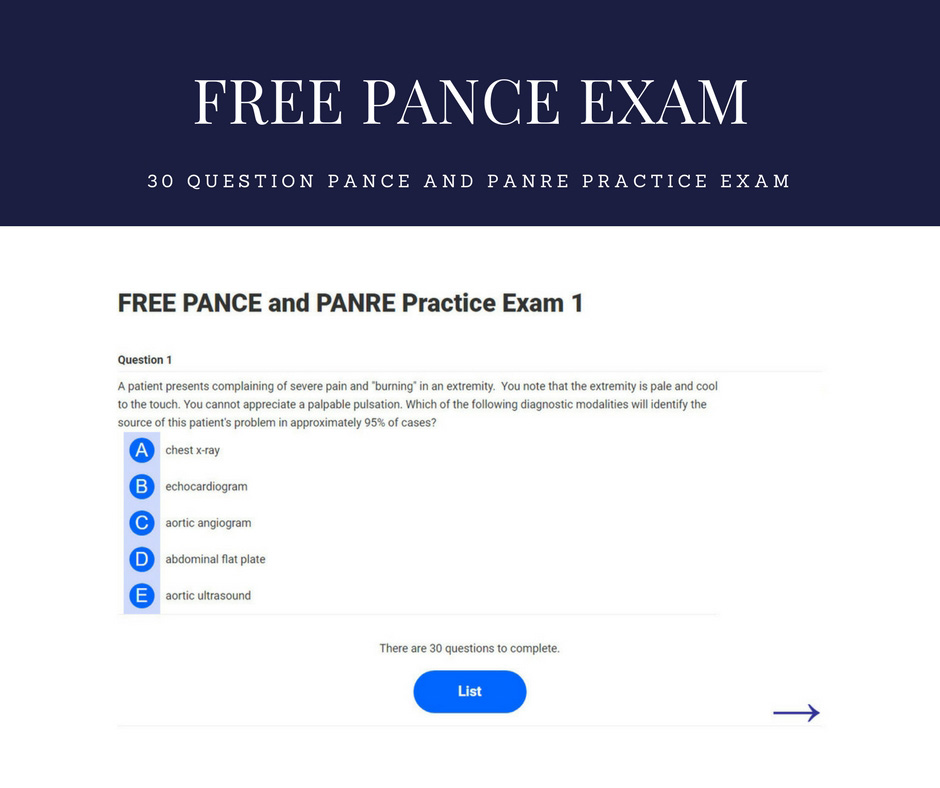
FREE PANCE and PANRE Practice Exam
Want 100’s of more questions just like these? Join Smarty PANCE Complete the next 90 questions to get your score – Gain full access to all my interactive board review exams including the audio PANCE and PANRE and the brand new Virtual PANCE and PANRE.
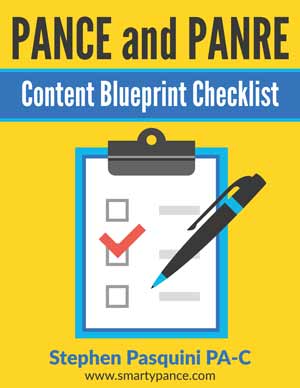
The PANCE and PANRE Content Blueprint Checklist
Your Blueprint to Success Starts Here! If you are at all like me the hardest part of studying for your PANCE or PANRE is figuring out where to begin. There is an ever-growing list of review books, podcasts, online programs, in-person review courses, and anecdotal recommendations to choose from. It’s overwhelming! So, the key to success […]

The DO’S and DON’TS of the PANCE and PANRE Examination
What do you think? While taking your PANCE or PANRE should you change your answer if you have a good reason to do so? The DO’S and DON’TS of the PANCE and PANRE Examination The following DO’S and DON’TS are excerpted from the wonderful Lange Q&A Physician Assistant Examination Board Review Book and summarize important points you should always […]
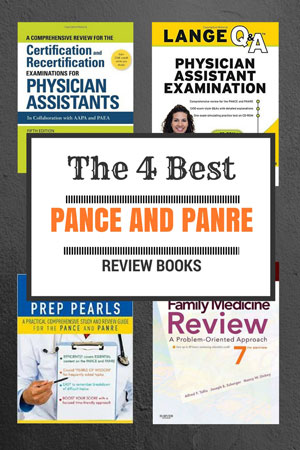
The 4 Best PANCE and PANRE Study Guides and Review Books
What are the best PANCE and PANRE board review books? Here are my picks for the top PANCE and PANRE review books of 2023. These books helped me score in the top 5% on the PANCE and PANRE exams. You can browse my complete list of reading recommendations or sign up for my reading list newsletter […]
State Board of Registration
You can visit your state chapter’s website for a link to your state’s Board of Registration. You will likely need official transcripts from all schools attended. You should download this form well in advance and start collecting transcripts and all other information that you can to speed up the process.
Based on five regions (for state chapters) and five federal service areas – provide their members locally-based CME, networking opportunities, social gatherings, timely information, advocacy, and job resources. Below are links to all 56 of AAPA’s constituent organization chapters.
- Alabama Society of Physician Assistants
- Alaska Academy of Physician Assistants
- Arizona State Association of Physician Assistants
- Arkansas Academy of Physician Assistants
- California Academy of Physician Assistants
- Colorado Academy of Physician Assistants
- Connecticut Academy of Physician Assistants
- Delaware Academy of Physician Assistants
- District of Columbia Academy of Physician Assistants
- Florida Academy of Physician Assistants
- Georgia Association of Physician Assistants
- Hawaii Academy of Physician Assistants
- Idaho Academy of Physician Assistants
- Illinois Academy of Physician Assistants
- Indiana Academy of Physician Assistants
- Iowa Physician Assistant Society
- Kansas Academy of Physician Assistants
- Kentucky Academy of Physician Assistants
- Louisiana Academy of Physician Assistants
- Maine Association of Physician Assistants
- Maryland Academy of Physician Assistants
- Massachusetts Association of Physician Assistants
- Michigan Academy of Physician Assistants
- Minnesota Academy of Physician Assistants
- Mississippi Academy of Physician Assistants
- Missouri Academy of Physician Assistants
- Montana Academy of Physician Assistants
- Naval Association of Physician Assistants *
- Nebraska Academy of Physician Assistants
- Nevada Academy of Physician Assistants
- New Hampshire Society of Physician Assistants
- New Jersey State Society of Physician Assistants
- New Mexico Academy of Physician Assistants
- New York State Society of Physician Assistants
- North Carolina Academy of Physician Assistants
- North Dakota Academy of Physician Assistants
- Ohio Association of Physician Assistants
- Oklahoma Academy of Physician Assistants
- Oregon Society of Physician Assistants
- Pennsylvania Society of Physician Assistants
- Physician Assistant Academy of Vermont
- Public Health Service Academy of Physician Assistants *
- Rhode Island Academy of Physician Assistants
- Society of Air Force Physician Assistants *
- Society of Army Physician Assistants *
- South Carolina Academy of Physician Assistants
- South Dakota Academy of Physician Assistants
- Tennessee Academy of Physician Assistants
- Texas Academy of Physician Assistants
- Utah Academy of Physician Assistants
- Veterans Affairs Physician Assistant Association *
- Virginia Academy of Physician Assistants
- Washington Academy of Physician Assistants
- West Virginia Association of Physician Assistants
- Wisconsin Academy of Physician Assistants
- Wyoming Association of Physician Assistants
Job Search Spots
Finding the right drop is not so daunting. As a physician assistant, job prospects abound, and if you set your feelers loose, you will likely find many jobs in various specialties. Here are some of the tools I use:
- Indeed.com: I am a big fan of Indeed and found my current job using the mobile app. You can set alerts and get updates delivered directly to your inbox once a week.
- AAPA Joblink: Sponsored job search through the American Academy of Physician Assistants
- Check your state chapters; most of them have job postings
- Linked In: If you haven't already done so, you should update your LinkedIn profile: I get recruiter emails all the time, and employers still use this to find and screen candidates.
- PAJOBsite.com
- Monster.com
- CareerBuilder.com
- Craigslist: This used to be a great tool for finding PA jobs in your area and still can have some listings not found in other popular outlets. It is worth searching and setting alerts.
- Check individual hospital/practice websites in your area (some organizations only post on their own career site)
Posts to read:

The 10 Best Websites for Physician Assistant Job Search in 2024
If you’re a physician assistant/associate looking for a new job, you’re in luck! There are plenty of great places to look for your next PA position. But where is the best place to start? To help you out, we’ve outlined some of the best places to search for jobs as a PA in 2024. Here […]
Paying for PA School
An excellent, comprehensive informational tool on loan repayment. Geared toward medical students, but much of the information applies to PA students as well. This site offers information on loan repayment apps and links to great repayment options.
- Association of American Medical College’s Loan Repayment Options
- Public Service Loan Forgiveness
- Student Academy of AAPA Financial Aid Resources
Service-Connected Scholarships/Repayments:
- Loan Repayment Programs: U.S. Airforce; U.S. Army; U.S. Navy
- NHSC Loan Repayment Program
- Indian Health Service Program
- U.S. Public Health Service Corps
Loan Repayment Programs:
- The National Health Service Corps Program (NHSC) is a competitive federal program. Students dedicated to practicing primary care in communities of greatest need can compete for educational scholarships. I was an NHSC Scholar, and you can read more about that here. They also offer a generous loan repayment program in exchange for two years of service in a designated healthcare shortage area (see the next section below).
- Federal and state-funded programs
Posts to read:

Scholarships, Grants and Loan Repayment Programs for Physician Assistants
PA School is Expensive It goes without saying PA school is expensive. PA school is also demanding, which means you will have limited time (if any) to work while attending school. With the average undergraduate education debt prior to PA school at $36,300 and the average anticipated debt load from PA school at $75,000-$124,000, it […]
PA Postgraduate Residency and Fellowship Programs
- Residency programs allow the physician assistant to gain both clinical and didactic knowledge that would take years of on-the-job training to attain. It provides a faster-paced, formalized training program of supervised practice, allowing physician assistants to be utilized much faster than new graduates.
- The PA can develop the judgment and technical abilities in a specialized practice area, thus increasing their confidence in their chosen specialties.
- Many employers give preference to residency-trained physician assistants.
- Residency programs can be a great way to transition to a specialty practice for a mid-career PA looking for a new challenge.
- It is also recognized that most employers are willing to pay more for a physician assistant who completed a residency program.
Use the search box to search by specialty or location. Click the header column to sort based on that criteria. Click on the web link to visit the postgraduate residency program website.
Posts to read:
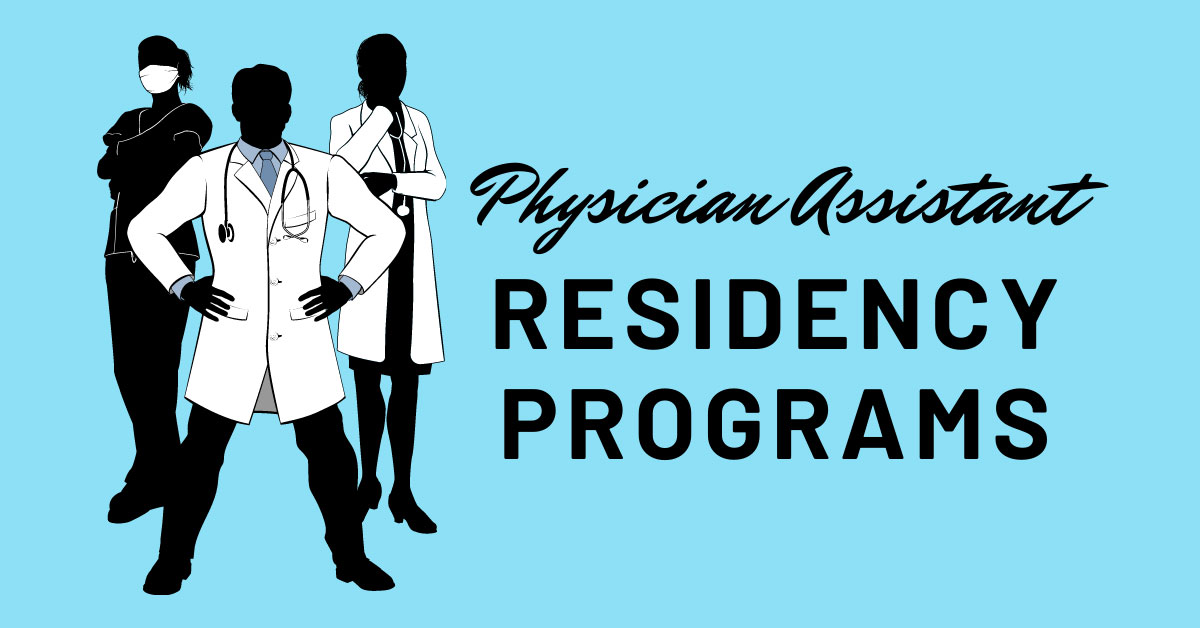
Physician Assistant Postgraduate Residency and Fellowship Programs: The Ultimate Guide
Postgraduate PA School Residency and Fellowship Programs As a new or even experienced PA, it is normal to feel uncomfortable with the thought of jumping into a medical specialty. Often, we have had little more than 30 days of training in a particular field, and we join a team of specialists who may expect us […]
Contract and Negotiations
- The AAPA Salary Report: $200 (yes, that is ridiculously overpriced)
- AAPA interviewing and contracts basics
- AAPA Career Companion
- AAPA Career Central
- Student SPARK Session Powerpoint at AAPA Conference
Posts to read:
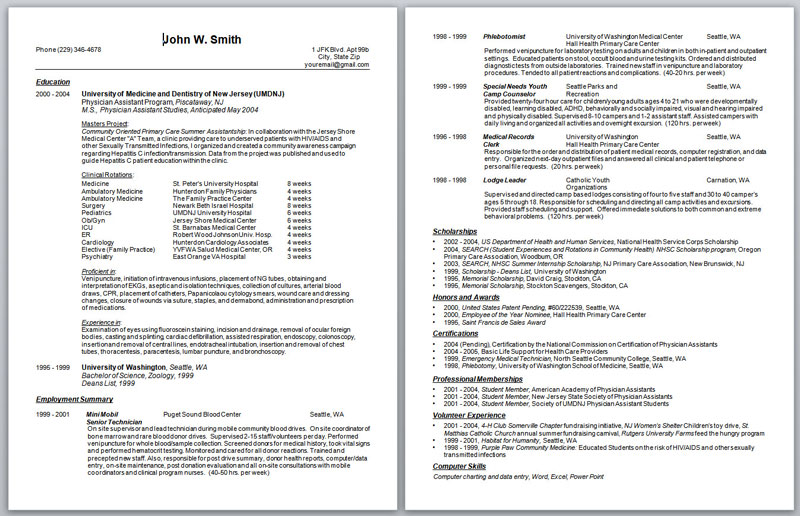
Physician Assistant Resume – Curriculum Vitae and Cover Letter Downloads
These are fully customizable Microsoft Office and Word templates. No formatting is required! *Need help crafting your physician assistant resume, CV, or cover letter? Resume Editing Cover Letter editing New Graduate Physician Assistant Resume Template This is a resume geared specifically for new graduate Physician Assistants. It has a clean, professional, and simple design (it also […]
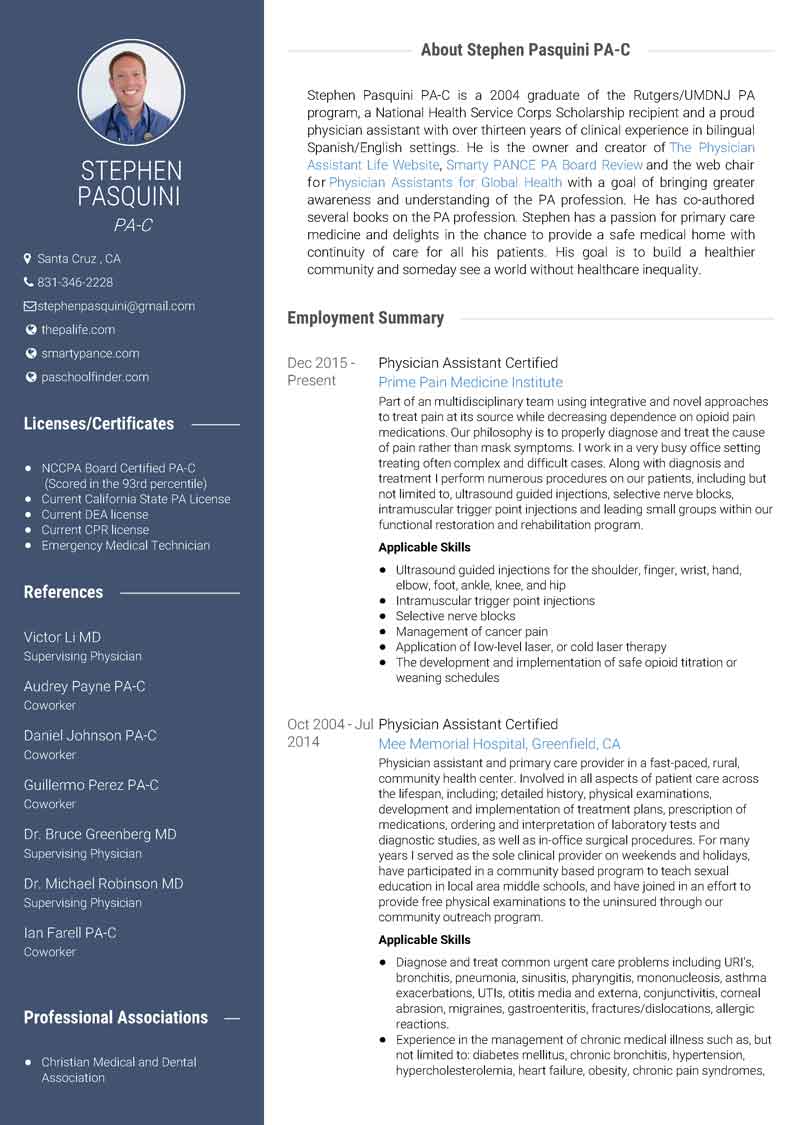
Use VisualCV to Create a Stunning Physician Assistant Resume
I have a confession to make. For many years I have had a copy of my physician assistant resume posted here on the website, available for download as a guide to help you structure and organize your own physician assistant CV. It has helped 100’s (if not 1000’s) of practicing and new graduate PAs like […]
Continuing Medical Education
There are lots of options for CME, but here are some of my timeless favorites. They are not only good for CME, but they are good for your mind as well.
- UpToDate: If you have an UpToDate subscription, it automatically tracks CME each time you log in and read and article
- American Family Physician: you can get anywhere from 4-6 CME credits, with each journal averaging about 50 per year. The articles are spectacular.
- Primed: Yes, this is heavily pharma-sponsored, but the lectures are great, and the conferences are a real bargain.
- Prescribers Letter: Although the CME credits are not groundbreaking, subscribing to this letter will make you a better practitioner, and it's good for about 15 Credits per year.
Apple and Android Applications
Here are a few of my favorites. You can see my full list of preferred apps by clicking here.
| Tarascon Pharmacopoeia: There are lots of Pharmacopeia apps out there, but Tarascon continues to be my favorite. If you are a fan of the pocketbook (and let’s be honest, who’s not), you will love the app. Loaded with some amazing tools (especially the pediatric dosing charts), blazing-fast load times, and zero advertisements, the Tarascon Pharmacopoeia is well worth the one-time annual investment. I would find it hard to practice without it. |  |
| EMRA Antibiotic Guide: The easy-to-use EMRA Antibiotic Guide helps you navigate the multitude of choices in antibiotics quickly and efficiently so you can offer your patients the best care based on the latest guidelines. |  |
| Shots Immunizations: If you work in family practice medicine, pediatrics, or you are an urgent care PA trying to figure out whether or not your patient needs a tetanus booster, this app will save the day. It is simple, updated annually, free, and incredibly useful. Download this app, and you will be set for life (at least from an immunization standpoint). |  |
| Essential Anatomy 5: I find this to be a handy tool in the clinic that my patients (and my kids) absolutely love. It has a beautiful and intuitive interface that my 5-year-old can use. It allows you to isolate individual systems, muscles, organs, etc., etc. The muscle functions add-on, which allows you to visualize a muscle's action, is spectacular and easily worth the extra seven bucks. I have learned more about anatomy from this app than a year's worth of undergraduate anatomy or the anatomy class I had in PA school, for that matter. Without a doubt, this is the most beautiful, well-designed, and “essential” anatomy app on the market. | 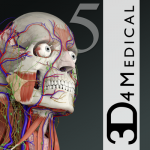 |
| LabGear – Medical Lab Values & Tests Reference: Although this is becoming a bit less useful in the era of electronic medical records having a good lab reference is a must. If you are going to use one, Lab Gear is by far the best. LabGear sports a clean, well-designed, and simple to navigate user interface that makes finding lab values painless and extremely fast. The best part is that Lab Gear provides a differential diagnosis based on high and low abnormal values, the ability to add notes and favorite along with direct links to Wikipedia articles covering each topic. Once again, I have tried many lab apps, and this is by far the best. |  |
| UpToDate: If you are lucky enough to have a free subscription to UpToDate, consider yourself blessed. This is hands down the best application in the world with extremely detailed summaries on the most "up-to-date" diagnosis and treatment protocols. |  |
| Pedi QuikCalc: As the name implies, this app allows you to quickly calculate medication doses based on weight and age. It also has several other useful tools such as pediatric BP goals, growth charts, vaccine recommendations, and pretty much everything else you can imagine. It's a must-have app! |  |
Posts to read:
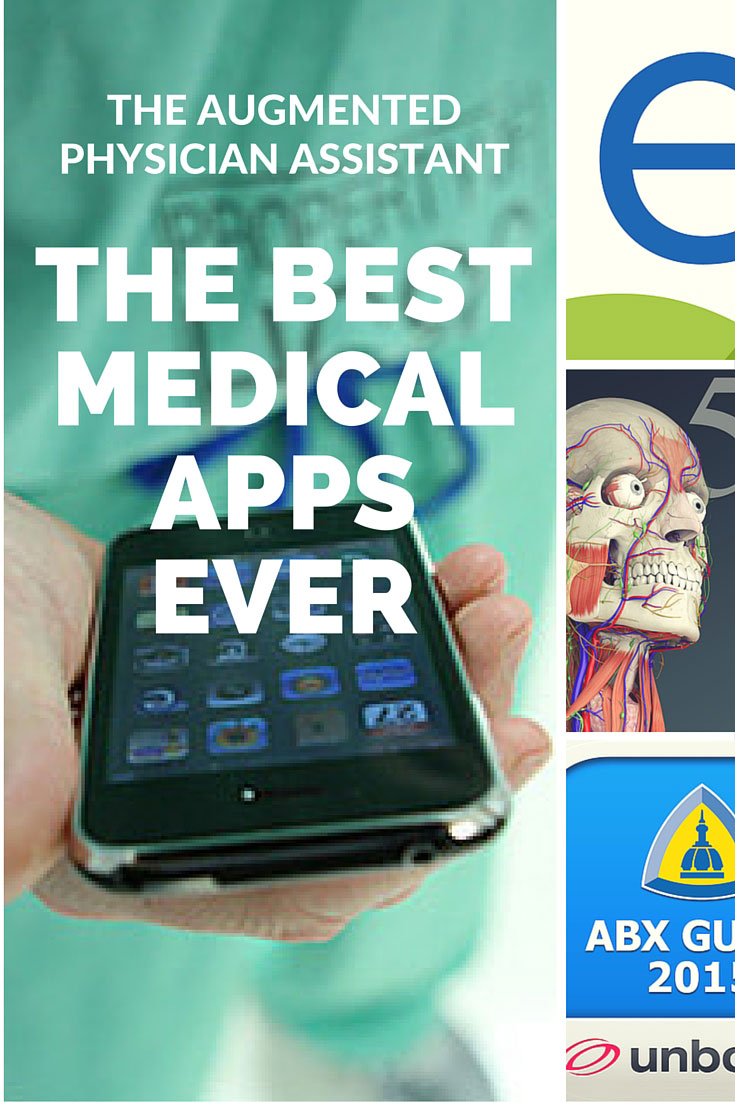
The Best Apps for Physician Assistant Students and PA Professionals
The Augmented PA If you haven’t noticed, the medical app business is booming, and for good reason. As physician assistant students, PAs, or practicing medical professionals, we need to synthesize a tremendous amount of data and be able to recall it in a pinch. We are short on time, overloaded with information, and expected to […]
Patient Handouts and Resources
- Epocrates Patient Literature Library: Did you know Epocrates Online offers an amazing collection of English and Spanish Patient Resources? Check it out. It's amazing!
- Patients Like Me: An amazing idea: Bring patients together and let them document their symptoms and what helped. This is set to revolutionize the way we do healthcare!
- RxAssist: A wonderful resource for free and discounted medications for patients. Search by medicine to find discounted pharmacies. This tool is priceless!
- Needy Meds: information on patient assistance programs. All our information is free and updated regularly.
Help patients deal with bills:
- 5 Questions to Ask During Your Hospital Stay
- 6 Questions to Ask Before Every Doctor's Appointment
- How to Choose a Doctor
- How to Deal With Bills
- Templates for Protest Letters
Books to Read
Read these books, and you will be a better physician assistant. For even more recommendations check out my constantly updated big list of the very best books for PAs.
Posts to read:

The Big List of The Very Best Books for PAs
The Best Books for Pre-PAs, Practicing PAs, and For Your PA School Clinical and Didactic Years “The more that you read, the more things you will know. The more that you learn, the more places you’ll go.” – Dr. Seuss, I Can Read with My Eyes Shut One of the best habits you can develop […]
